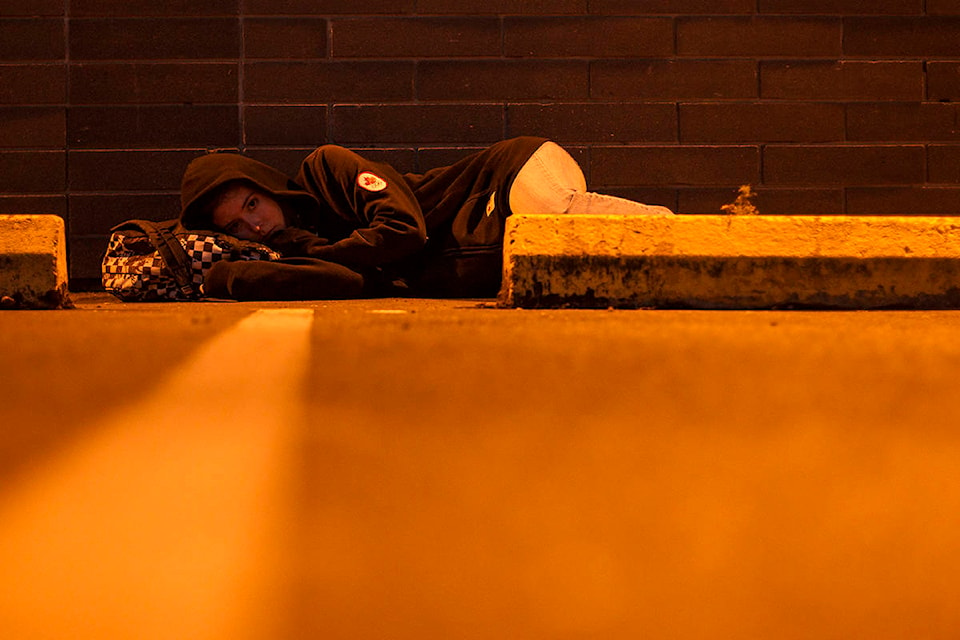Shalu Mehta/News Staff
About two years ago, Rian Wademan was homeless in Victoria, desperate to get out of the situation he was in.
At the time, he was 20 years old and struggling with post-traumatic stress disorder from previous unstable housing situations and poor experiences in psychiatric institutions in Alberta and B.C.
“They were like prisons that you could leave for a bit but you’d have to go back in the end,” Wademan said.
Unable to live with his mother due to a breakdown in their relationship as well as incidents that led to more issues while living with his grandmother in Chilliwack, Wademan eventually moved to Victoria and stayed at the Salvation Army shelter.
Eventually, he made his way into programs offered by Threshold Housing Society, where he said his life turned around.
“I came in with PTSD and was socially awkward and I’m still suffering from it but now I have a better understanding of who I am,” Wademan said. “I’ve healed here more than I have anywhere else. I’m independent and had time to heal from trauma.”
According to Threshold’s executive director Colin Tessier, many youth who are homeless struggle with mental health challenges. He said the current system that is set up to support youth with mental health services is “imperfect,” with most service providers stretched thin.
“The thing that keeps me up at night is the ever-present threat of suicide amongst the youth population,” Tessier said.
Many youth experiencing homelessness are fleeing violent situations where they’ve experienced verbal, physical or sexual abuse. In addition, living in poverty incurs trauma, Tessier said, and it closes doors to a young person that others can freely walk through.
READ ALSO: B.C. hospitals fail to meet rights of mentally ill patients admitted involuntarily: report
Threshold’s mental health navigator and acting director of program services Jason Walsch said that most of the youth coming to the organization are experiencing a lack of mental health services. While there are great resources in the region like The Foundry, Walsch said many are oversaturated and involve long waits before youth can see someone.
“The goal is to ensure people don’t get to a critical point, but a long waitlist can lead to that,” Walsch said.
While Threshold aims to help those struggling with mental health challenges in-house, and all staff are trained in suicide prevention, they have their own limitations as well, Tessier said. He noted that youth who go to the hospital in crisis situations are often turned right back around, unable to stay and get the support they need.
“What they really need is medication and clinical support and time to find balance,” Tessier said. “It’s a very challenging gap in our system.”
According to the Canadian Mental Health Association, mental disorders in youth are ranked as the second-highest hospital care expenditure in Canada, where 3.2 million youth between the ages of 12 and 19 are at risk for developing depression.
READ MORE: Fractured services leave community to fill gaps
One of the leading causes of death in Canadians between the ages of 15 and 24 is suicide, with 4,000 people dying by suicide each year.
In 2017, the B.C. government created the first Ministry of Mental Health and Addictions in Canada. A statement from the ministry said that while 84,000 children in B.C. are experiencing a mental health challenge at any given time, only one in three are accessing the services they need. The government has launched a 10-year road map to improve mental health and addictions care for people throughout the province with an initial priority to improve care for youth, including increasing access to and improving early intervention and prevention services.
The ministry has also invested in assisting school districts and independent schools to better support mental health care for youth and children. Eight centres similar to the Foundry in Victoria have also been opened across the province to bring health and social services together under one roof for youth. The Foundry network will be expanded to 19 centres once the ministry’s plan is complete.
In June, a change to B.C.’s Mental Health Act was also proposed to allow young people to be held for immediate treatment for 48 hours after they arrive at hospital with a drug overdose. The “short-term stabilization care” could also be extended up to seven days.
“If you can get a person the help they need and they can stick in the hospital and get clarity in terms of medication and balancing out then it can work out and people stabilize,” Tessier said. “But when you’re in and out it keeps a vulnerable person vulnerable. In addition, how do you do any of this without a home, when you’re in survival mode every day?”
-With files from Katherine Engqvist and Tom Fletcher
This Black Press Media series will take a look at different factors of youth homelessness in the region. This is part two of the four-part series.
READ ALSO: Cyclical re-admissions to hospital puts heavy burden on B.C.’s health care system and shelters
